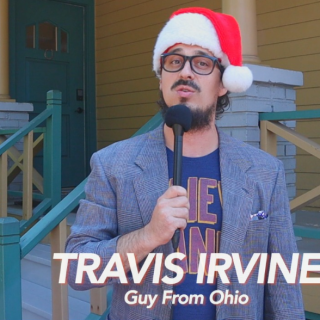I’ve long admired street photographers, those expert snapshot takers whose images somehow combine transient beauty with eternal truth. At the same time, I’ve wondered what kind of personality you’d need to be one.
You’d have to be warm and sensitive enough to notice the human drama unfolding around you, but you’d also have to be callous enough to record that drama regardless of how it affects the people involved.
It sounds like a contradiction, and that’s the perfect description of the subject of Finding Vivian Maier, a film written and directed by John Maloof and Charlie Siskel.
Well, that’s one of two perfect descriptions. The other is “enigmatic.”
The documentary recounts Maloof’s effort to track down the secretive photographer whose work has drawn posthumous comparisons to Diane Arbus and other such luminaries. Maloof’s quest began after he purchased boxes of Maier’s negatives that were put up for auction following her death in 2009.
Through detective work worthy of Sherlock Holmes, Maloof managed to learn that Maier was a nanny who never seemed to go anywhere without her trusty Rolleiflex. Despite shooting thousands upon thousands of images during her 83 years, she never exhibited any of them. Beyond those central facts, an unfinished portrait emerges from Maloof’s interviews with people from her past, including parents and children who knew her as a nanny. It turns out that even the one woman who considered her a friend was in the dark about her true identity: The woman assumed Maier was French, but she actually was born in New York City.
It seems that Maier went out of her way to hide her true identity, even going so far as to affect what one linguist describes as a phony French accent. She also used numerous aliases, including multiple spellings of her last name.
As the film goes on, darker themes emerge from Maloof’s interviews and the bits of evidence Maier left behind, including home movies and tape recordings. On a visit to her mother’s native France, he also uncovers surprising evidence that Maier may not have been wedded to the idea of keeping her photographic talent hidden.
This revelation is accompanied by one of the rare moments in which J. Ralph’s score becomes obtrusive, heralding the news with obvious joy. That brings up the one real criticism that can be leveled at the film: that it could be described as self-serving. After all, if Maier wanted her photos exhibited, it tends to justify Maloof’s attempts to do just that—attempts from which he might well profit.
But it’s hard to worry too much about Maloof’s motives when faced with the brilliant images he’s uncovered—images that would likely have died with Maier if they hadn’t ended up in his hands.
Finding Vivian Maier is a fascinating detective story that doesn’t quite solve its central mystery but still manages to have a happy ending. Namely, it ends with the world in the process of discovering a new photographic genius.
Rating: 4 stars (out of 5)
Self-conscious look at teenage sex
There have been any number of films about teenage boys trying to lose their virginity. The genre probably reached its peak with 2007’s hilarious but sensitive Superbad.
But where are the films about teenage girls trying to lose their virginity? The pickings are pretty slim, probably because it doesn’t seem like a promising topic. Sex just isn’t that hard to come by for the average girl, much to the horror of parents everywhere.
Last year, we had The To Do List, a flick that won few friends despite starring the lovable Aubrey Plaza. And now we have It Felt Like Love, the feature-length debut of writer-director Eliza Hittman.
Unlike either The To Do List or most of its male counterparts, It Felt Like Love is not a comedy. In fact, there’s nothing the least bit funny about it. If anything, it takes itself way too seriously.
It begins with a shot of 14-year-old Brooklynite Lila (a glumly believable Gina Piersanti) wading into the roaring ocean surf, then turning around to gaze directly into the camera. The symbolism couldn’t be more obvious: Lila is determined to enter the turbulent world of human sexuality, whatever the dangers.
We soon meet Lila’s more-adventurous friend, Chiara (Giovanna Salimeni), who’s already on her third boyfriend, Patrick (Jesse Cordasco). Fueling Lila’s frustrations, Chiara and Patrick are constantly teasing and caressing each other in her presence.
Back at home, Lila tries to engage the younger-looking boy next door (Case Prime) in a game of Dare, but he shows no interest. Desperate for affection, she can’t even persuade the family pooch to climb onto the bed with her.
Finally, Lila begins hanging around Sammy (Ronen Rubinstein), a tattooed hunk of a college student who’s reputed to sleep with anyone. He responds with a mixture of annoyance and confusion, but he also invites the underage girl over to smoke a blunt and watch porn.
If you’re a mom or dad, about now you’re probably wondering: Where are Lila’s parents? Well, her father (Kevin Anthony Ryan) is antagonistic and seemingly unconcerned, and her mother is absent (for reasons that are explained much later). Lila is left to explore the hazardous waters of sexuality on her own.
It’s likely that writer-director Hittman is going for a cautionary statement on 21st century attitudes toward sex, especially as they affect callow teens like Lila. Porn and explicit rap lyrics have turned sex into a collection of bedroom gymnastics rather than an expression of love, she seems to say. It’s an important point that’s been made before, and it’s worth making again. It’s just unfortunate that she makes it in such an obvious and self-important way.
Sean Porter’s cinematography contributes to the annoyance factor. Besides being dominated by intrusive close-ups, it features such a shallow depth of field that many shots are largely out of focus. Along with the unsatisfyingly short scenes and one-dimensional (though convincingly acted) characters, it all adds up to a myopic approach that eliminates anything that doesn’t support Hittman’s thesis.
Sexually curious boys got the brilliant Superbad; now their female counterparts get the gloomy and self-conscious It Felt Like Love. Somehow, it doesn’t seem like a fair tradeoff.
Rating: 2 stars (out of 5)
Finding Vivian Maier and It Felt Like Love open Friday (April 25) at the Gateway Film Center. Both are unrated; It Felt Like Love features rough language, sexual situations and brief nudity. For show times, visit gatewayfilmcenter.com.




